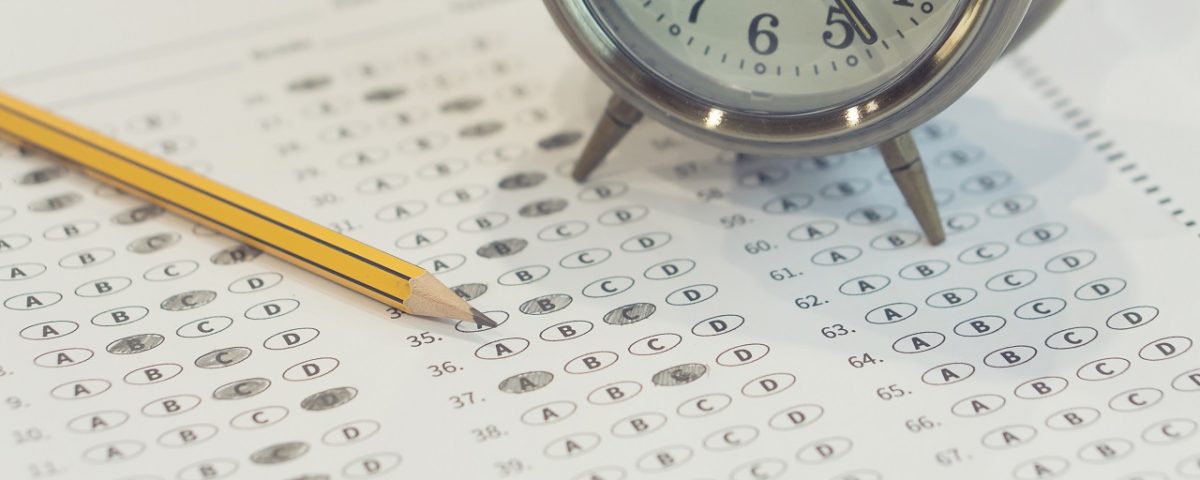Critical Considerations for the New SAT in the Post-COVID Era

Expert Note-Taking Tips for Scholastic Success
November 28, 2022
The Different Types of Standardized Tests
December 12, 2022Originally posted on: https://steemit.com/sat/@billorrin/critical-considerations-for-the-new-sat-in-the-post-covid-era
Does the SAT still matter in the post-COVID era? Due to the disruptions in standardized testing during the COVID-19 pandemic, most universities suspended their SAT testing requirements for applicants in 2020. Since then, many universities made the change permanent to address the socioeconomic inequities of the exam and to reduce barriers to higher education for students of diverse backgrounds.
In response to these concerns, the College Board, the official exam board for the SAT, conducted one of the biggest overhauls in the exam’s history. Through these changes, they aimed to keep the SAT relevant in the post-COVID era.
The most significant change for the SAT is the new digital format, which makes the exam easier for educators to administer and less stressful for students to take — compared to the previous paper format with bubble answer sheets. Test centers will implement the new SAT in March of 2023 for international locations and in the spring of 2024 for the U.S. Over 1000 international testing centers exist in more than 175 countries, including the U.K., Canada, and Australia.
For students preparing for the SAT in the coming years, this article will serve as a guide for the new SAT in a post-COVID world.
What is the SAT?
Founded in 1926 by the College Board, the SAT is an entrance exam required by most four-year colleges and universities. The multiple-choice exam measures a high school student’ college readiness and provides colleges with a standard benchmark to compare all applicants.
The SAT consists of two sections: math and evidence-based math, and text-based reading and writing. The score for each SAT section ranges from 200 to 800 with the highest possible score of 1600. Students usually sit the exam during the spring of junior year or the fall of senior year. National testing dates occur in August, November, December, March, May, and June.
In recent years, many universities placed less emphasis on the SAT in the admissions process for several reasons. One of the prevalent reasons includes how the exam perpetuates racial and socioeconomic inequities, thereby potentially leading to a less diverse student body. Historically, the SAT tends to favor white students from middle and upper-class families and disadvantage students of color, reflecting the racism and elitism in the American education system. For example, Black and Latino students, on average consistently score lower than white and Asian students.
Furthermore, recent research indicates that high-school GPA is five times more predictive of college success than standardized test scores. But despite these issues, the SAT continues to hold an important position in America’s higher education system.
Should Students Still Take the SAT?
Yes! When making admission decisions, most universities review a student’s SAT exam score, as well as their high school transcripts, GPA, extracurricular activities, personal essays, and letters of recommendation from teachers and mentors.
Though many universities implemented test-flexible or test-optional policies, college-bound students should still take the SAT. As testing requirements continue to shift in the coming years, taking the SAT lets students keep their options open. It’s better to pass the exam and not need it, rather than limit their options by not having an SAT score at all.
Test-Optional & Text-Flexible Schools
When applying to college, students should review the latest testing requirements for each university on their list, as these may change from year-to-year post-COVID.
Certain universities chose to permanently shift to test-optional or test-flexible policies. Test-optional means a university doesn’t require applicants to submit the SAT or other standardized test scores when applying for admission. Test-flexible means students can choose which type of exam to submit for consideration. For example, students can choose to submit their SAT or ACT scores if they want, or they can opt for other exam scores instead, such as Advanced Placement and International Baccalaureate.
The largest system to launch test-optional policies includes the University of California system, which will completely phase out standardized testing requirements between 2021 and 2025. The system is currently test-blind, meaning that submitted exam results won’t impact a student’s candidacy.
Other top-ranked universities on the East Coast with test-optional policies include Hofstra University, Sarah Lawrence College, Wesleyan University, and Smith College. Many top-tier schools now focus less on the SAT in the admissions process. A few of these universities on the East Coast include New York University, Bard College, and Trinity College. Students can access the full list of permanently test-optional and test-flexible schools here.
Which Aspects of the SAT will Remain the Same?
Students must sit for the SAT at school or a testing center, as it cannot be administered at home. The SAT will remain scored out of 1600, with 800 points for the math section and 800 points for the combined reading section.
The math section focuses on several topics, including algebra, problem-solving, data analysis, manipulating complex equations, geometry, and trigonometry. The reading section presents several reading passages, followed by multiple-choice questions that test reading comprehension.
The writing/language section includes questions about the expression of ideas, including development, organization, and effective language use, as well as the use of language, including sentence structure, grammar, usage, and punctuation.
What Will the New SAT Look Like in 2024?
The new SAT exam in 2024 will look very different from previous years. However, most of these changes will make the exam less stressful and more accessible for students from diverse backgrounds. According to SAT trial results from 2021, 80% of students found the exam less stressful, while 100% of educators rated administering the new digital exam as a positive, successful experience.
The new SAT will also become 100% digital, administered online with a laptop or tablet. Say “Goodbye” to the thick test booklets and endless answer bubbles. Students will have the option to use their own devices. This change seeks to boost accessibility for students and educators, enabling more students from diverse backgrounds to register for the SAT.
In addition, the SAT will be shorter, another change that increases accessibility and reduces stress and other barriers for test-takers. The SAT will have fewer questions and last two hours, instead of three. Students will also receive additional breaks between sections.
For the math section, the SAT no longer includes a non-calculator section. Thus, students can use a graphing calculator for all sections. In addition, students no longer need to bring their own calculator because the digital exam has a graphic calculator. The reading section comprises shorter texts from a wider variety of sources, including more diverse authors, as well as fewer questions per passage.
After taking the exam, students can expect to receive expedited score results in 2-3 days, rather than the previous wait of up to several weeks. The final report will also include comprehensive information for students, including college prep and community resources.
How to Prepare for the SAT in a Post-COVID World
To get ready for the new exam format, students should use test prep materials, such as sample questions, tutorials, and practice exams. Test prep companies offer 1-on-1 courses and private sessions to help supercharge SAT exam scores. According to research, on average, formal test preparation raised verbal section scores by about 10 points and math scores by approximately 20 points.
Through these resources, test prep companies teach the relevant knowledge and test-taking strategies to help students increase test-taking confidence and improve performance on exam day. By making these resources readily available, test prep companies can have a significant impact on a student’s SAT exam score and improve the chances of enrolling at a first-choice university.


